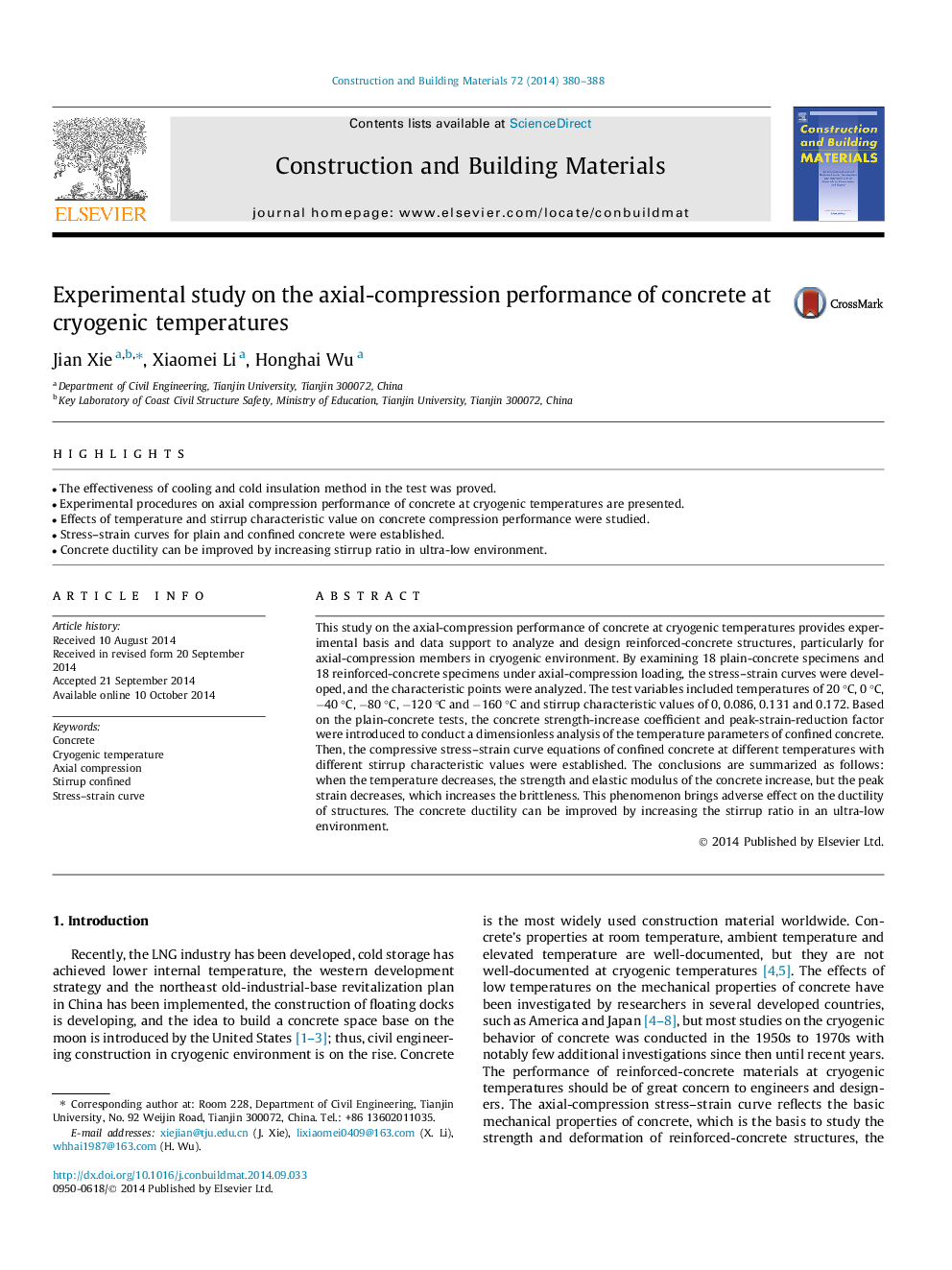| Article ID | Journal | Published Year | Pages | File Type |
|---|---|---|---|---|
| 6722179 | Construction and Building Materials | 2014 | 9 Pages |
Abstract
This study on the axial-compression performance of concrete at cryogenic temperatures provides experimental basis and data support to analyze and design reinforced-concrete structures, particularly for axial-compression members in cryogenic environment. By examining 18 plain-concrete specimens and 18 reinforced-concrete specimens under axial-compression loading, the stress-strain curves were developed, and the characteristic points were analyzed. The test variables included temperatures of 20 °C, 0 °C, â40 °C, â80 °C, â120 °C and â160 °C and stirrup characteristic values of 0, 0.086, 0.131 and 0.172. Based on the plain-concrete tests, the concrete strength-increase coefficient and peak-strain-reduction factor were introduced to conduct a dimensionless analysis of the temperature parameters of confined concrete. Then, the compressive stress-strain curve equations of confined concrete at different temperatures with different stirrup characteristic values were established. The conclusions are summarized as follows: when the temperature decreases, the strength and elastic modulus of the concrete increase, but the peak strain decreases, which increases the brittleness. This phenomenon brings adverse effect on the ductility of structures. The concrete ductility can be improved by increasing the stirrup ratio in an ultra-low environment.
Related Topics
Physical Sciences and Engineering
Engineering
Civil and Structural Engineering
Authors
Jian Xie, Xiaomei Li, Honghai Wu,
